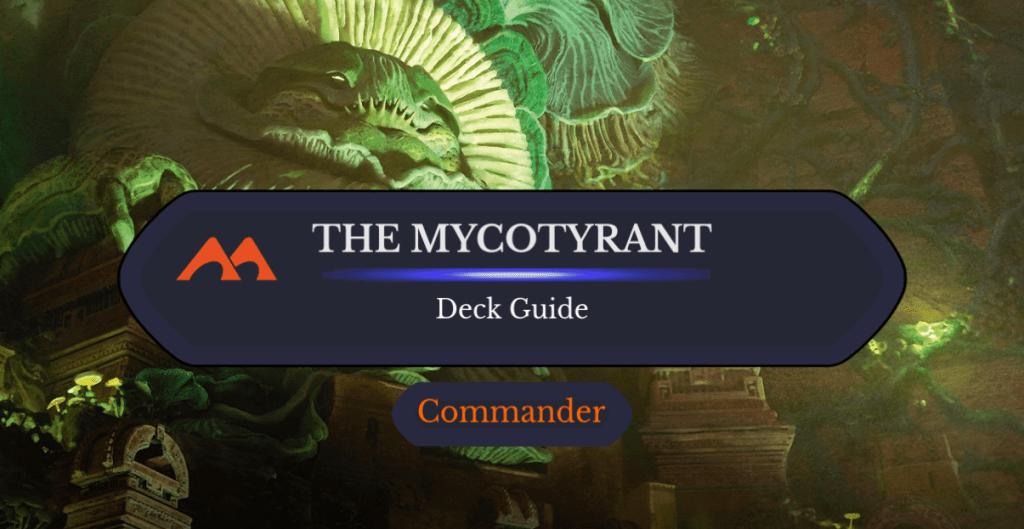
The Mycotyrant | Illustration by Chase Stone
Saproling creature tokens have been a hallmark of green creature decks in Commander since the format’s first official release. Since then, a lineage of saproling-focused commanders have hit the command zones of countless players, going wide and ending games with an Overwhelm or feeding an Ashnod's Altar for a big aristocratic drain.
The Lost Caverns of Ixalan’s The Mycotyrant is our newest saproling-focused commander, with the extra twist of playing well with fungus creatures as well! Get out your pocket knives and let's dig around in the dirt to unearth some distinctive mushroom cards for this Mycotyrant Commander deck!
The Deck
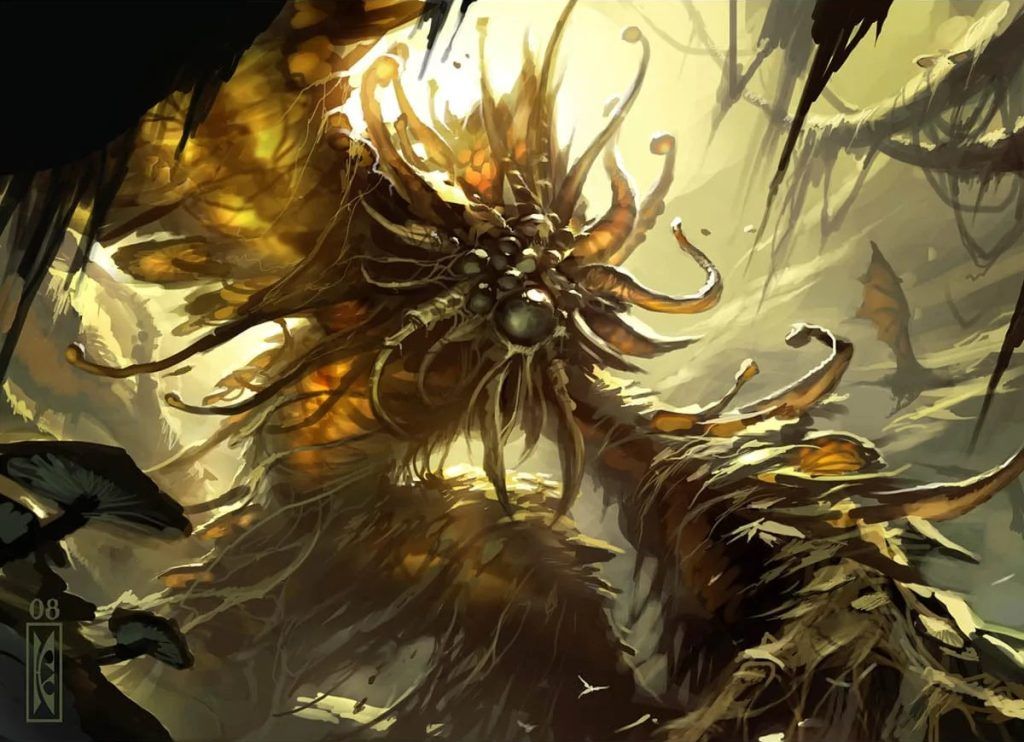
Mycoloth | Illustration by Raymond Swanland
Commander (1)
Creature (37)
Deathbonnet Sprout
Elves of Deep Shadow
Tukatongue Thallid
Utopia Mycon
Viscera Seer
Blood Artist
Cankerbloom
Deathspore Thallid
Korozda Guildmage
Priest of Forgotten Gods
Sakura-Tribe Elder
Skull Prophet
Sporecrown Thallid
Thallid Shell-Dweller
Thelon of Havenwood
Vitaspore Thallid
Zulaport Cutthroat
Akawalli, the Seething Tower
Braids, Arisen Nightmare
Jaheira, Friend of the Forest
Nyx Weaver
Psychotrope Thallid
Splinterfright
Stinkweed Imp
Daemogoth Titan
Mirkwood Bats
Pitiless Plunderer
Smothering Abomination
Sporesower Thallid
Timeless Witness
Mycoloth
Savage Thallid
Sporemound
Sporoloth Ancient
Tendershoot Dryad
Underrealm Lich
Titania, Nature's Force
Sorcery (3)
Profane Tutor
Diabolic Intent
Life from the Loam
Instant (5)
Deadly Dispute
Wrap in Vigor
Putrefy
Second Harvest
Shared Summons
Artifact (10)
Elixir of Immortality
Skullclamp
Sol Ring
Arcane Signet
Mind Stone
Swiftfoot Boots
Ashnod's Altar
Bow of Nylea
Golgari Cluestone
Golgari Locket
Enchantment (10)
Dark Heart of the Wood
Golgari Germination
Grave Pact
Life and Limb
Parallel Lives
Sporogenesis
Conspiracy
Dictate of Erebos
Moldervine Reclamation
Deadbridge Chant
Land (34)
Blighted Woodland
Bojuka Bog
Command Tower
Dakmor Salvage
Evolving Wilds
Forest x9
Golgari Guildgate
Golgari Rot Farm
Grim Backwoods
Hidden Necropolis
Hidden Nursery
Jungle Hollow
Myriad Landscape
Swamp x9
Terramorphic Expanse
The Dross Pits
The Hunter Maze
Verdant Catacombs
The time-honored tradition of playing a bunch of creature tokens is a green specialty, and this deck mixes that specialty with black’s great sacrifice outlets and synergies.
The focal point of our deck is The Mycotyrant’s fungus token creation ability. We want to descend as many times per turn as possible, either by milling permanents directly from our library or by sacrificing them from the field for value. To achieve this, we’ll be using a suite of the original spore counters-based Thallid creatures, plus some other generally good fungus and saproling creators.
A large proportion of our creatures are not actually fungi or saprolings, which might seem counterintuitive in a deck that wants to create as many of those creature types as it can. We’re actually relying on Conspiracy to make those utility creatures fungi or saprolings, further buffing our commander.
The Commander
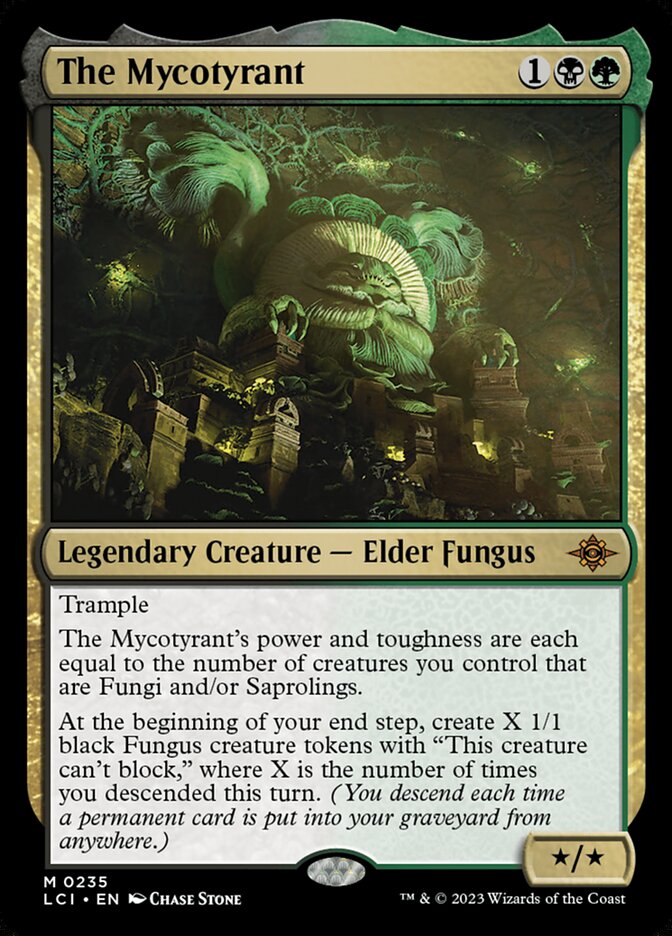
The Mycotyrant is a fun guy (I swear I’ll try to avoid making this pun again). Outside of Thelon of Havenwood, it's the only legendary creature that effectively links the cycles of Thallid-spore counter creatures with a playable strategy. The Mycotyrant’s second ability is really what we’re focusing on here: At the end of our turn, we create 1/1 Fungus tokens equal to the number of times we descended that turn. It’s crucial to remember that tokens do not count towards descend, so don’t sacrifice all your fungi expecting them to repopulate on your end step!
Fun-guys
The basis of this deck is its fungus creatures and creature token generators. The most basic generators are our Thallid creatures: creatures that add a spore counter each turn, before removing three to create a 1/1 saproling creature token. Most of these Thallids also have a sacrifice outlet for saprolings specifically.
Utopia Mycon, Deathspore Thallid, Thallid Shell-Dweller, and Vitaspore Thallid are the cheap end of our fungus creatures. Of them, Utopia Mycon is our biggest threat. It might not look like much, but it’s a Phyrexian Altar on a body in this environment.

Psychotrope Thallid is a fine mid-game play, and gives us access to some much needed draw outside of Skullclamp.
I’m not sure what the lore is behind Akawalli, the Seething Tower and The Mycotyrant, but I do know Akawalli makes for a great Timmy-sized threat to drop, especially since we’ll have no trouble getting to eight permanents in our graveyard.
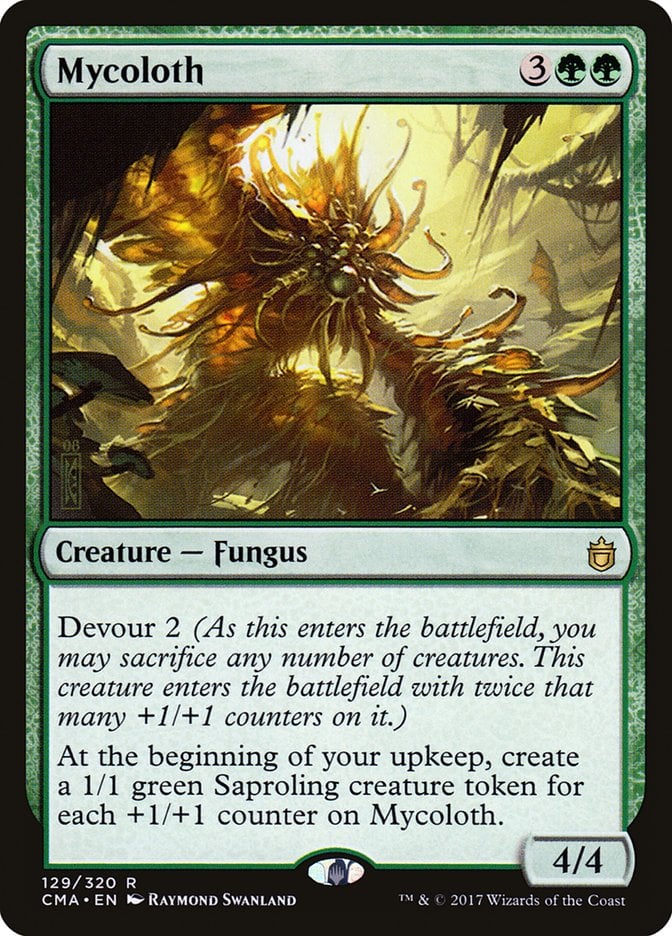
Our fungi really start to bloom in the 5 mana and up range. We all know and fear the Mycoloth for its general applicability outside of a Mycotyrant deck, but here it presses up against the ceiling of value. Imagine, if you will, dropping Mycoloth on turn 5 after you’ve played The Mycotyrant and descended a few times. Devouring all of those new fungus tokens turns into twice as many saproling/fungus tokens the following turn. Those won’t feed The Mycotyrant, but they’ll easily bring your opponents into lethal range with an aristocrat’s sacrifice outlet.

Regenerate doesn’t get enough respect, and Savage Thallid is here to prove it. Though it’s a steep cost for a creature playing the utility-protection game, there’s no reason The Mycotyrant should be destroyed by anything once Savage Thallid’s on the field.
Finally, Sporoloth Ancient and Sporesower Thallid are just here to speed up that spore counter generation. Alone on the field, you won’t see many more saprolings per turn, but these can drastically alter your token creation engine if they can follow up a few other Thallids.
A handful of non-spore counter fungus creatures are also present here. Deathbonnet Sprout is amazing for getting us a free descend every turn and provides great free graveyard removal once we hit the mid game. And, like Scavenging Ooze, it's usually not perceived as a large enough threat until it's too late.

Cankerbloom takes the place of a typical Naturalize in our deck, for the simple fact that it has a relevant creature type and the ability to proliferate those spore counters comes in handy more often than not.

Finally, it’s not the best typal lord in Magic, but Thelon of Havenwood is useful enough with our other sporey creatures to make the list.
Unfun-guys
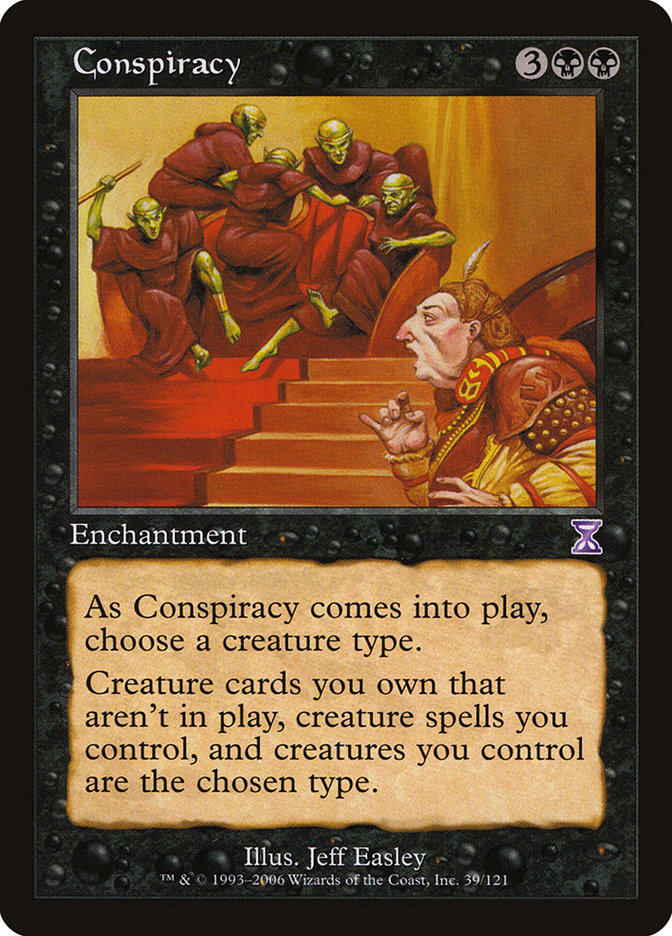
With a commander that cares so much about two specific creature types, we might be knee-capping ourselves with so many non-fungus creatures. However, The Mycotyrant can make enough fungus tokens to take care of itself, mostly, and in a pinch we’re also running Conspiracy to catch all our creatures in our spore cloud.
Our non-fungus creatures make up the majority of our utility spells and interaction pieces we’ll use to actually end the game. Staples like Blood Artist, Mirkwood Bats and Zulaport Cutthroat keep a healthy balance of life-pinging for each token we sacrifice, and we have the classic free sac-outlets in Ashnod's Altar, Viscera Seer, and Smothering Abomination.
A significant number of our non-fungus creatures are enablers for The Mycotyrant. We’ll get free descents off of Nyx Weaver, Splinterfright, Braids, Arisen Nightmare, and Underrealm Lich each turn. Daemogoth Titan and Priest of Forgotten Gods help clean up our board during our turn, and Pitiless Plunderer goes crazy in this deck.
A handful of dredge cards really help this deck dig its roots into the graveyard early, including our dank friend Stinkweed Imp and Life from the Loam.
Titania, Nature's Force might seem like an odd include in this deck, but its synergy with our self-mill (and, if we get lucky, Dark Heart of the Wood) makes it invaluable. Besides, we can always Conspiracy those Elemental tokens into fungus.
Fission
Fission is the process by which fungus cells divide and sprout new colonies. We’re inducing this growth via spells like Parallel Lives and Second Harvest, both excellent token doublers. Life and Limb and Sporemound, besides being the funniest two card combo known to man, are also great at growing our field of tokens and making them ripe for the harvest.
With all those creatures dying, we’d be remiss not to run Dictate of Erebos. In fact, this deck is light on removal, let's slap Grave Pact in there as well just to be a problem.
Moldervine Reclamation and Golgari Germination are easily-recognizable enchantments common in the creature tokens world, but we’re also running Sporogenesis as some extra insurance. A lot of these weird old cards get read by opponents and subsequently forgotten about, so hopefully they won’t realize you’re protecting your board from a Wrath of God by guaranteeing you’ll create a field of tokens once it resolves.
The Mana Base
This deck comes in at a fairly cheap average mana cost; about 2.98 according to Moxfield. As such, we’re only running 34 lands. We’re running more than the usual amount of sac lands, since these make great free triggers for The Mycotyrant.
In addition, we’ve got just two mana dorks in Elves of Deep Shadow and Skull Prophet, or three if you count Utopia Mycon. Ashnod's Altar will do more work for ramping you than you’d think, though, and we’re running the typical commander mana rock package of Sol Ring, Arcane Signet, and Mind Stone. We’ve favored Golgari Cluestone and Golgari Locket over Golgari Signet because we can sacrifice the other two in a pinch for another descent.

Outside of this, keep your eye on an ideal time to drop Jaheira, Friend of the Forest. Jaheira’s ability turns every one of those freshly sprouted fungi into mana dorks (with summoning sickness!).
The Strategy
This deck is relatively low-to-the-ground, meaning we can afford to keep a hand missing a few lands. Two lands is playable, but the essential decision is whether or not you have spells to cast on turns 1 and 2. Opening with Deathbonnet Sprout, Utopia Mycon, or Viscera Seer really sets the stage for an early victory.
Because of its cheap casting cost, you might see yourself casting The Mycotyrant as early as turn 3. Depending on which fungi we’ve pulled up to that point, it might be a good idea to keep your commander in the command zone until we can guarantee we’ll get multiple descents that turn. Cast The Mycotyrant with a Verdant Catacombs to squeeze out an extra fungus token that turn.
Once The Mycotyrant’s on the field and protected, we can start digging for a wincon. To do this, we need one of our free sac outlets like Viscera Seer or Ashnod's Altar and one or more of Blood Artist, Zulaport Cutthroat, or Mirkwood Bats. These three cards will reward us for playing our deck – which sounds condescending but I swear to you, it's not. Once The Mycotyrant’s up and running with a Moldervine Reclamation or Parallel Lives on the field, the deck plays itself.
This deck will struggle against board wipes. Returning permanents to the field after we’ve lost our board can be difficult, so we’ll try to save our Wrap in Vigor for the inevitable Blasphemous Act.
If we can’t seem to land a combat damage or aristocrats victory, it's time to use the tutors in this deck to dig up the game-ending infinite combo of Sporemound and Life and Limb.
Combos and Interactions
There’s a single infinite combo that I struggle to not include in every green deck I build, and the saprolings subtheme present in The Mycotyrant deck didn’t help my attraction.
Sporemound and Life and Limb combine into one of the funniest combos ever, in my humble opinion. Life and Limb makes every forest and every saproling into both simultaneously, and Sporemound makes a saproling every time a land enters the battlefield under your control. You can see where I’m going with this. With both cards on the field, a single saproling or forest entering the battlefield starts an infinite chain-reaction as Sporemound makes a saproling token for each saproling token that enters the battlefield, ending the game instantly and drowning the world in saprolings.
Rule 0
I don’t find the Sporemound/Life and Limb combo that game-breaking. For one, we’re looking at a 9-mana investment minimum (assuming we don’t have to go tutoring for those cards as well). Two, the combo doesn’t even end in a victory for us. Since the loop can’t be stopped (there are no “may” triggers present), unless someone else can destroy one of the pieces, the game ends in a draw. This isn’t even the deck’s main path to victory; it’s more of an excuse to get up and stretch your legs after that lifegain Oloro, Ageless Ascetic deck just refuses to quit.
Budget Options
This deck clocks in at about $165 for the cheapest printings. That’s a little below the average Commander deck price, so let’s take a look at some ways to power it up!
We’ll start with the glaringly obvious: Parallel Lives looks a little lonely all on its own, so why not shove a Primal Vigor and Doubling Season in as well. If we’re looking for faster ways to descend each turn, Hermit Druid is about as good as we can get. And, of course, you can always grab some upgrades for the mana base. Swap in a Phyrexian Altar instead of Utopia Mycon, and grab Prismatic Vista, Fabled Passage, and Nurturing Peatland for some more descending lands.
Other Builds
The Mycotyrant might seem like a bit of a one-trick pony, but there are some subtle variations in deck building that can pull this commander in other directions. Our deck splits the difference between some common themes for The Mycotyrant, but with a few adjustments we can make this deck even more mill-focused. Shifting away from our aristocrats theme and into a strategy that directly descends from the top of your library is just as effective for The Mycotyrant. Try replacing the typical life-drain triggers with Syr Konrad, the Grim and focusing more on free mill spells like Crawling Sensation and Crawling Infestation. Use classic Golgari cards like Varolz, the Scar-Striped and all the low-cost dredge cards to turn your graveyard itself into a threat.
Wrap Up
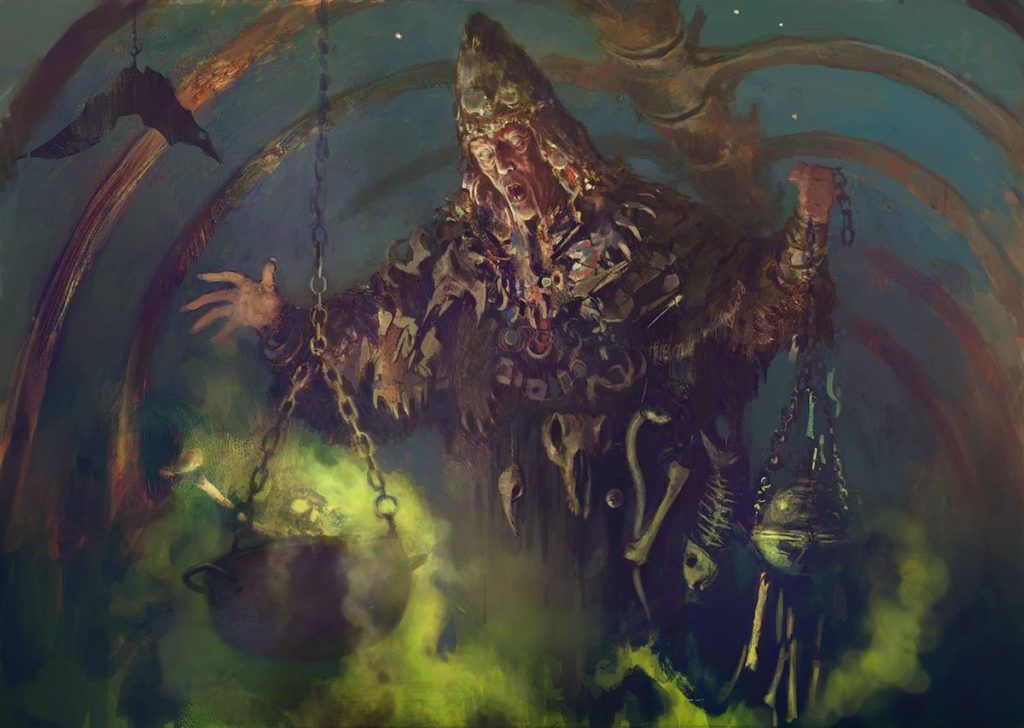
Skull Prophet | Illustration by Nils Hamm
The Mycotyrant is the Golgari commander’s commander, with a straightforward playstyle that is undeniably black/green. Its focus on creature tokens and an underrepresented creature type makes it unique in 2023 Magic, and I hope to see more cards with this design philosophy.
What do you think? Does The Mycotyrant have the right to rule? Are there any different builds you’d like to see with it? And what’s your favorite Saproling token? Let me know in the comments, or over on Draftsim’s X.
Thanks for reading, and stay squishy, my mycelium-y friends.
Follow Draftsim for awesome articles and set updates: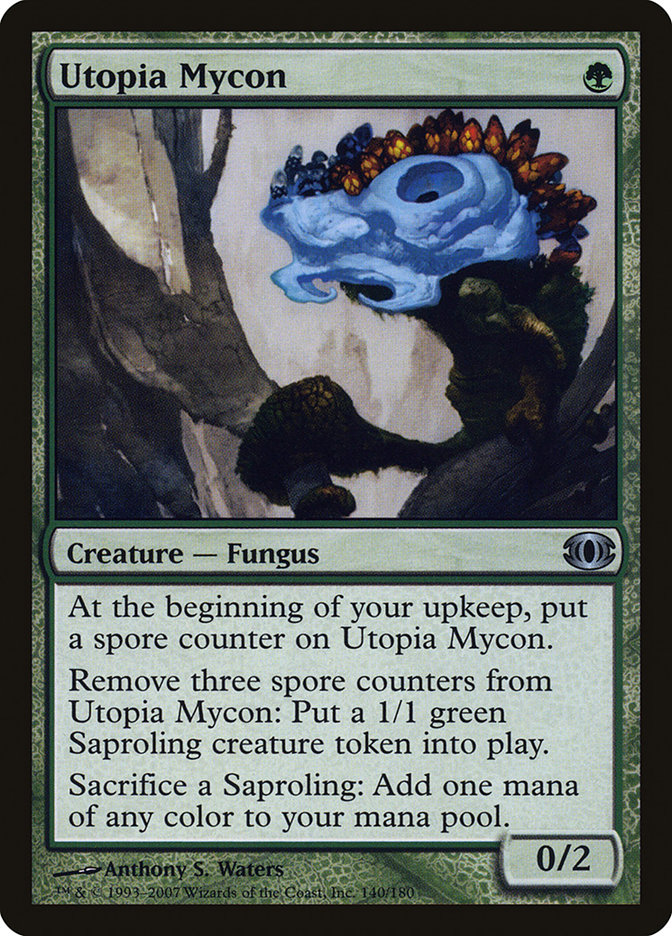

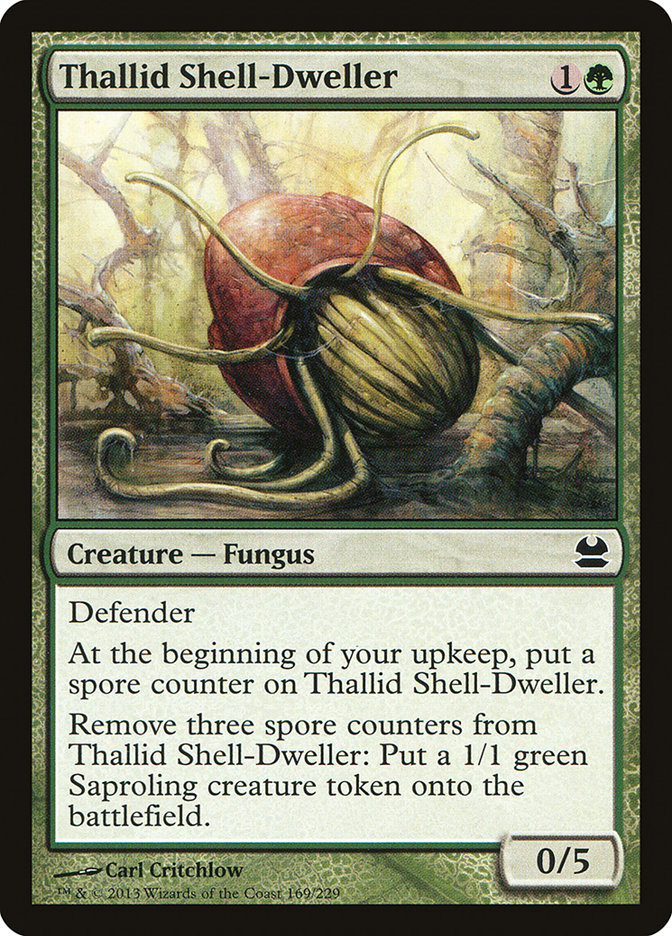
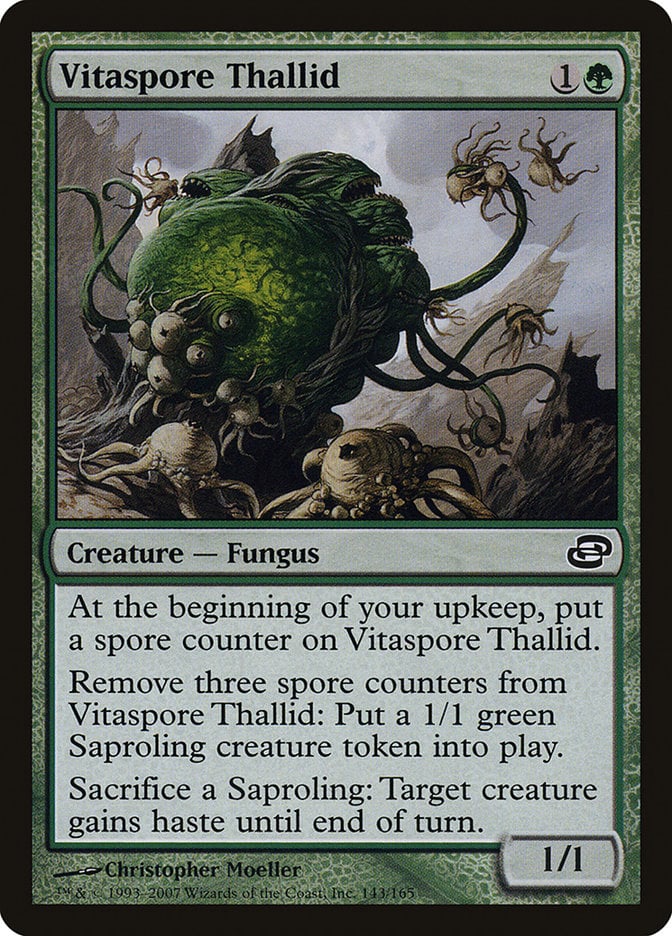

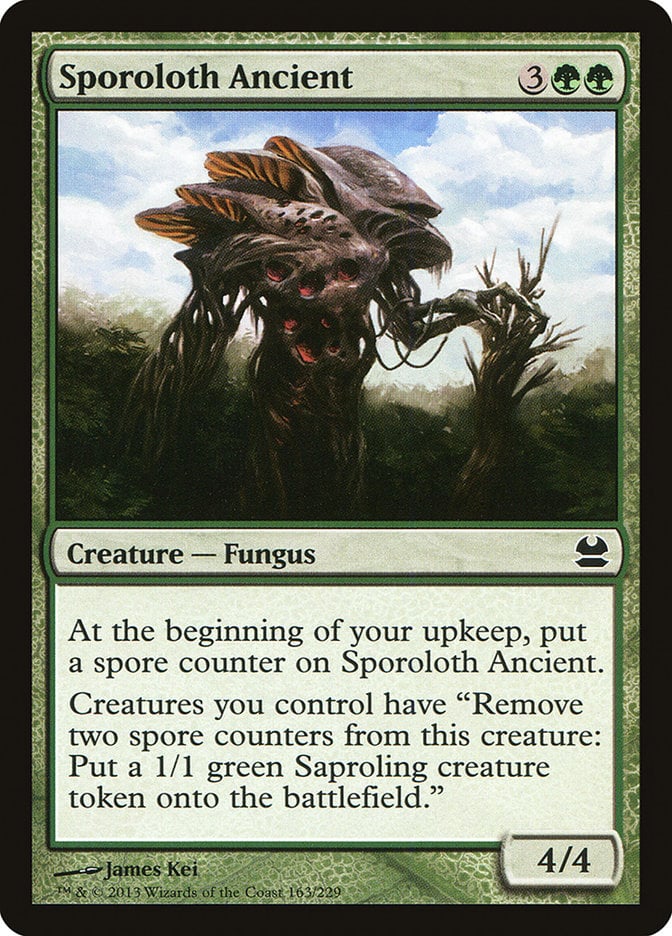
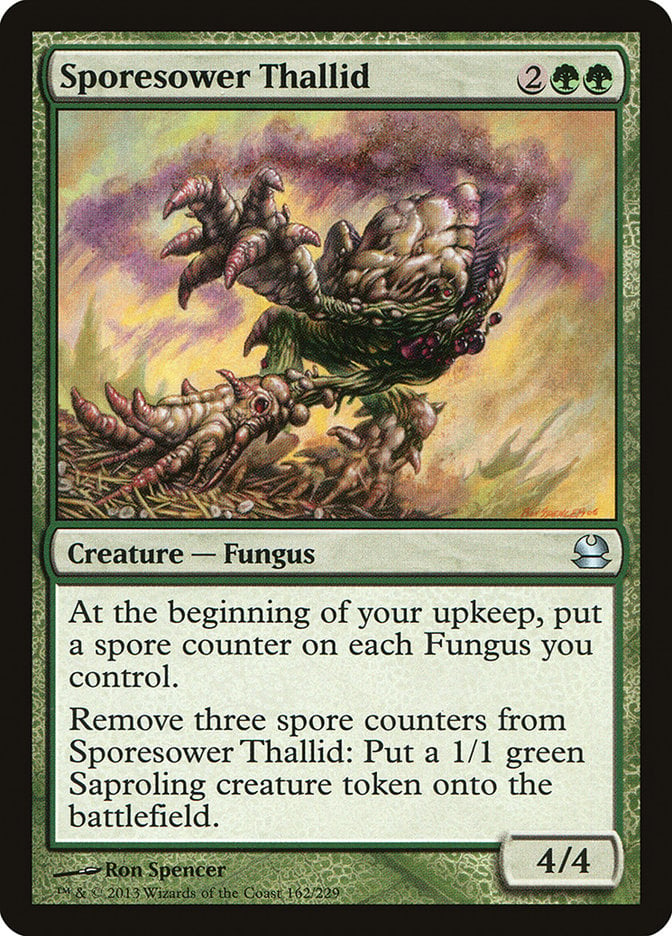
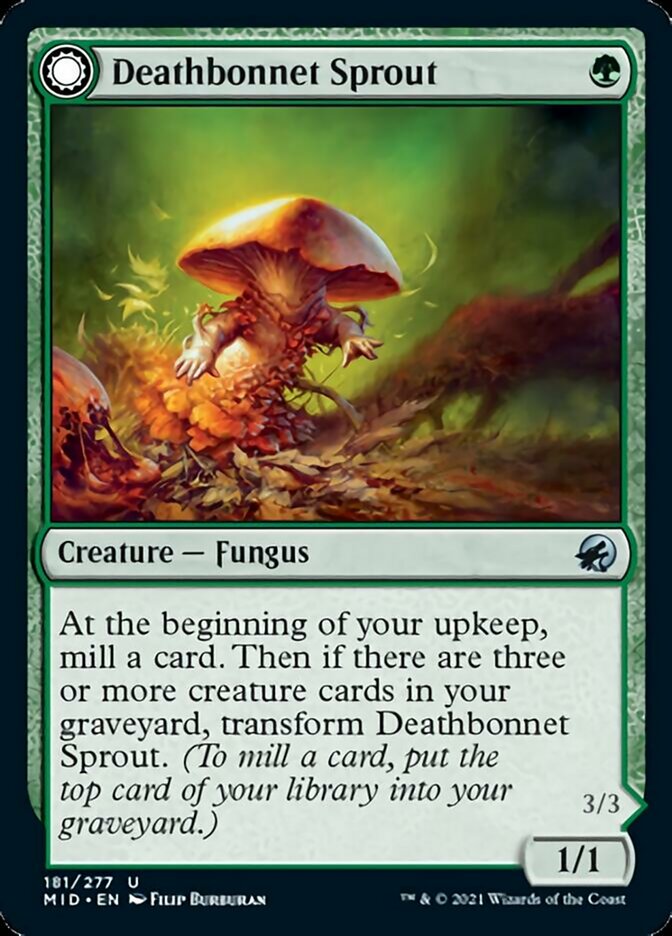
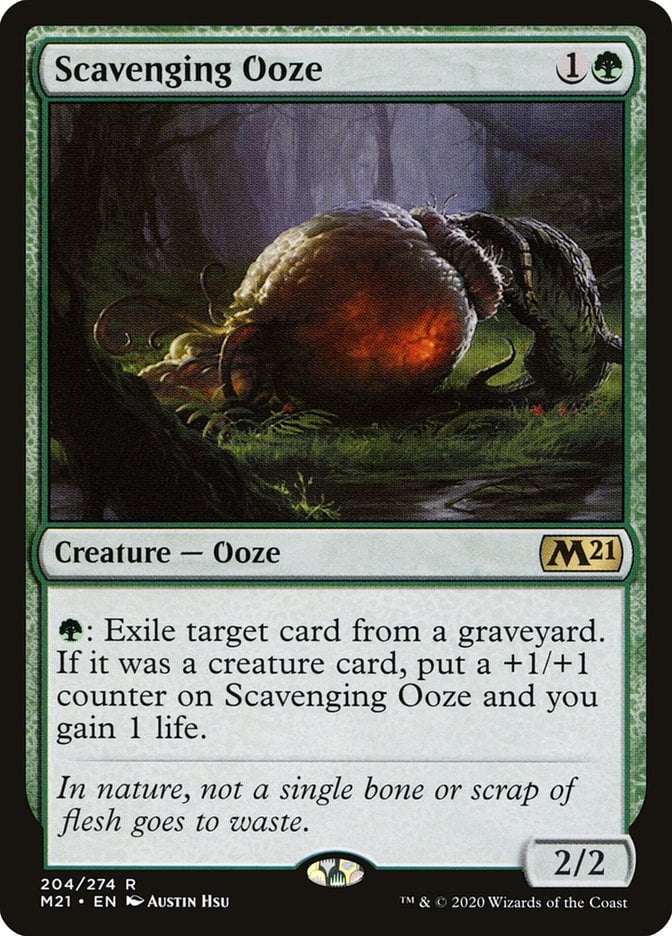
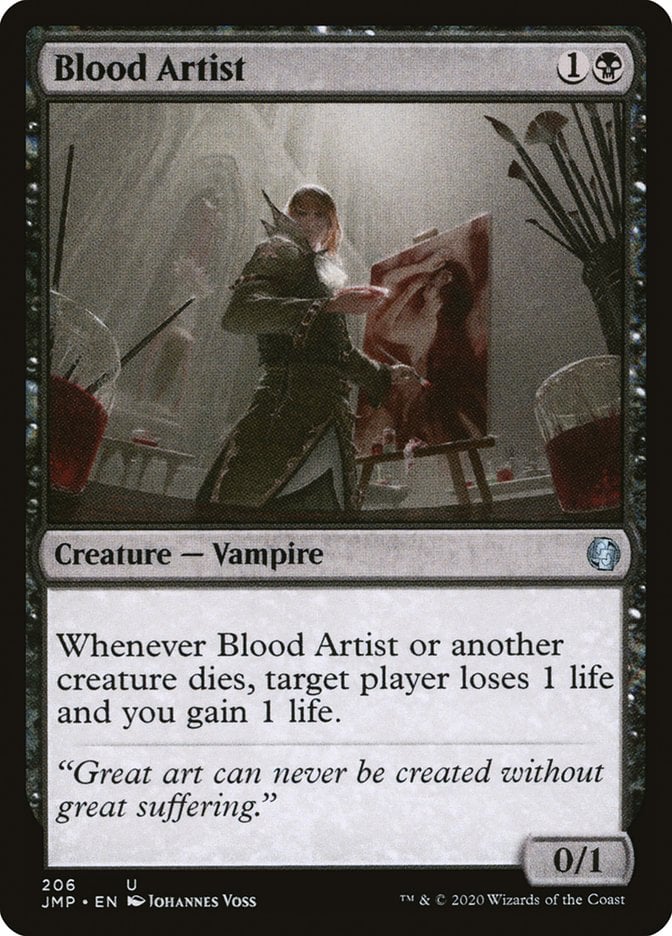

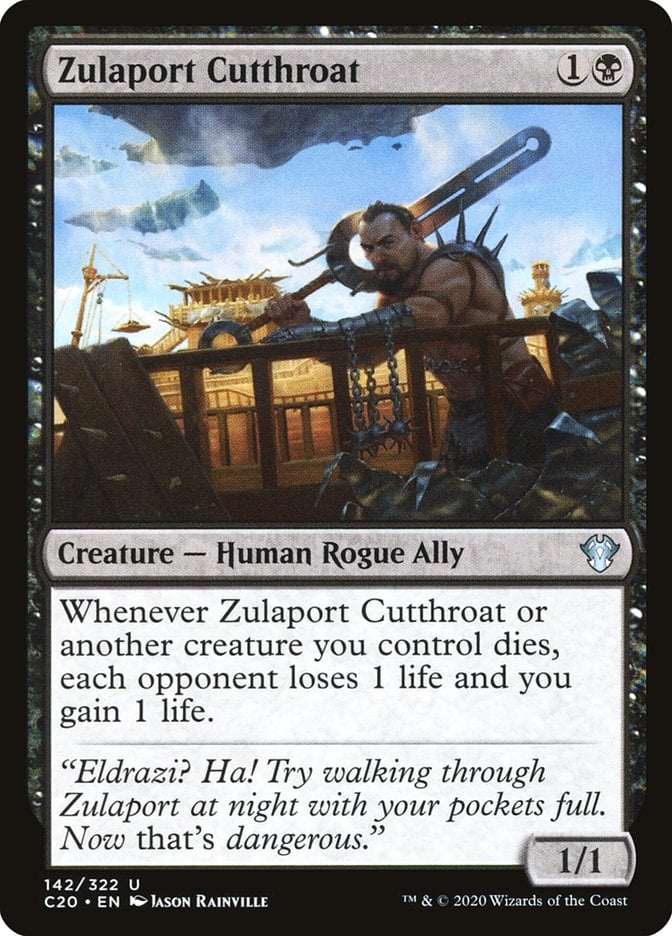


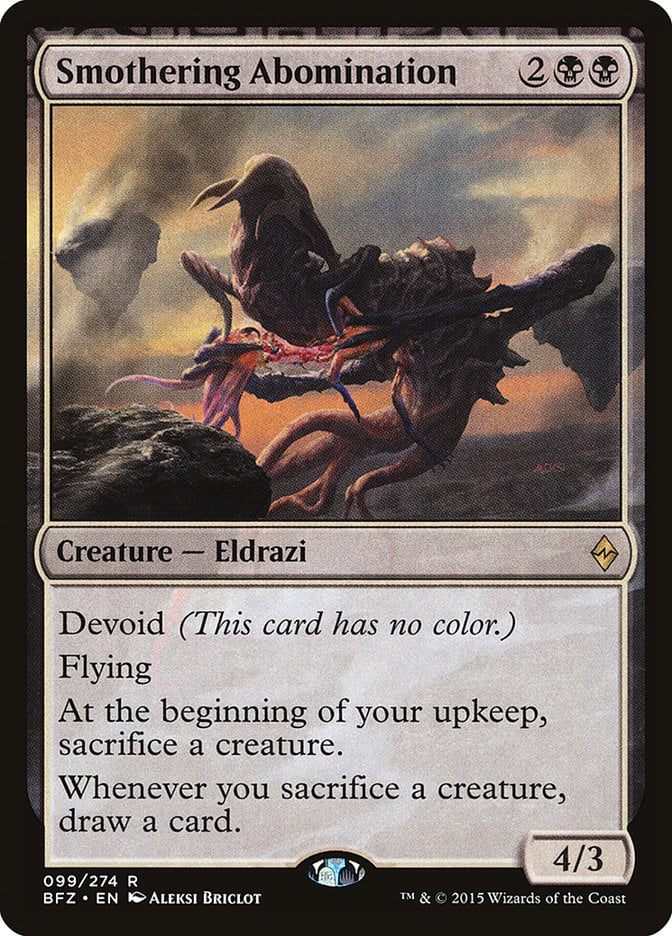

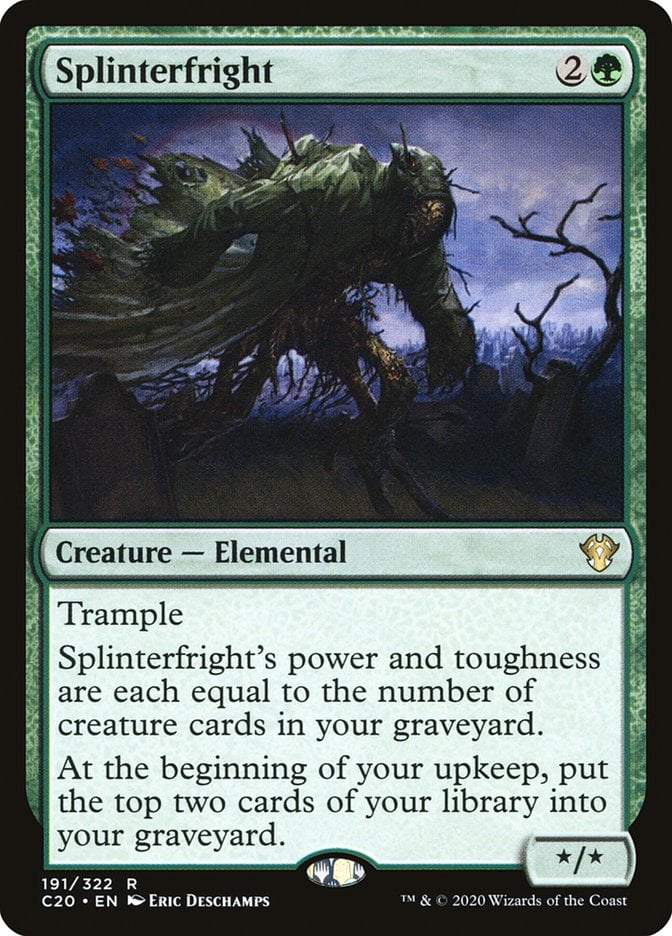


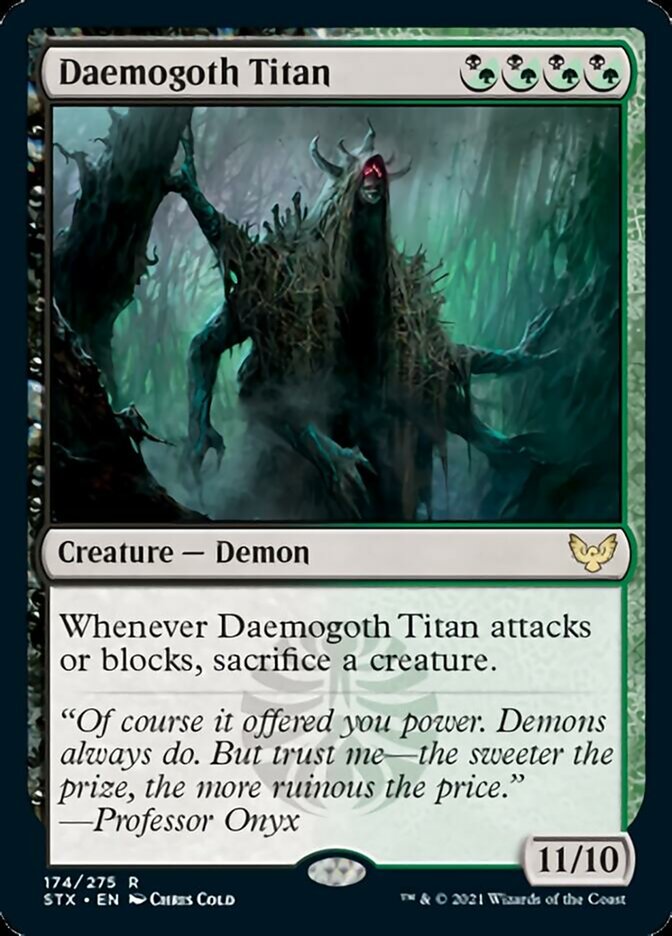




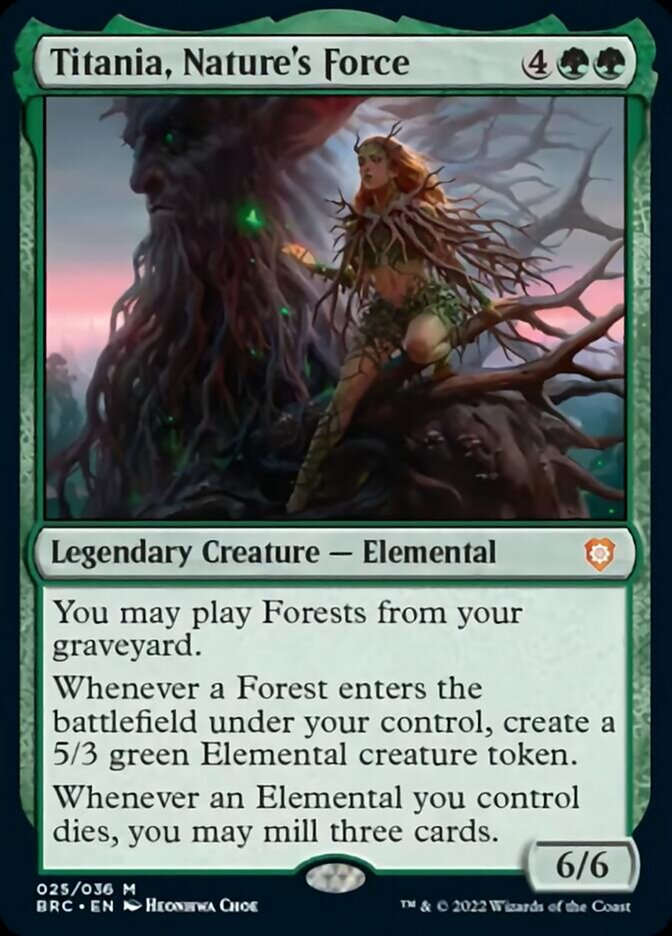
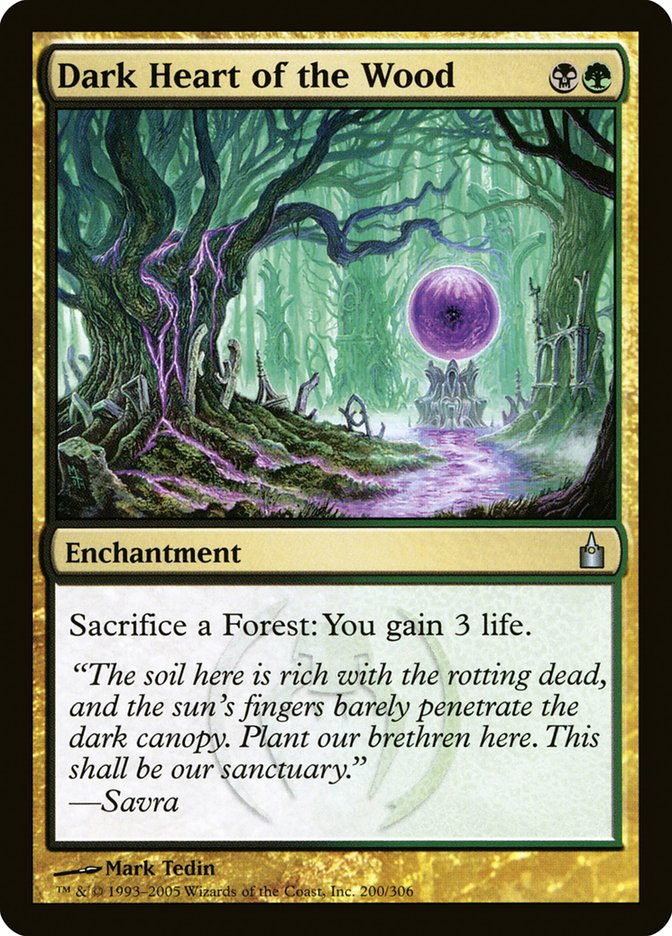
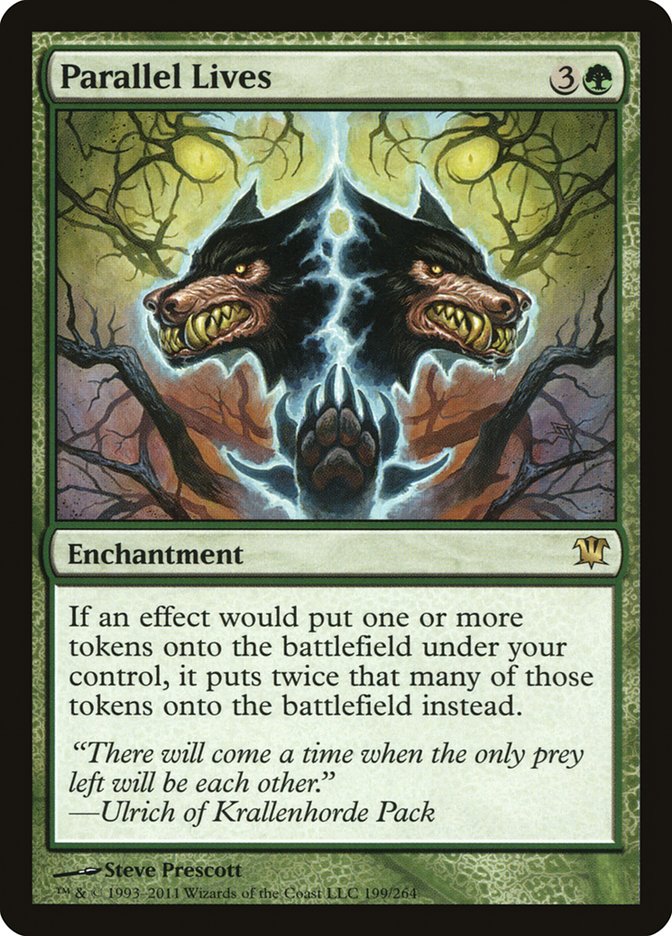
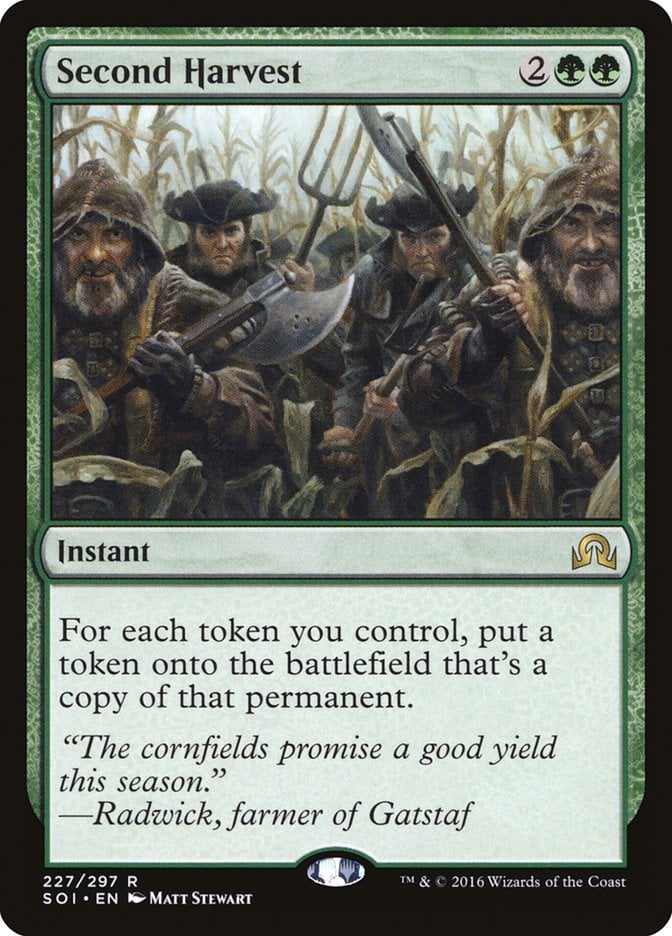
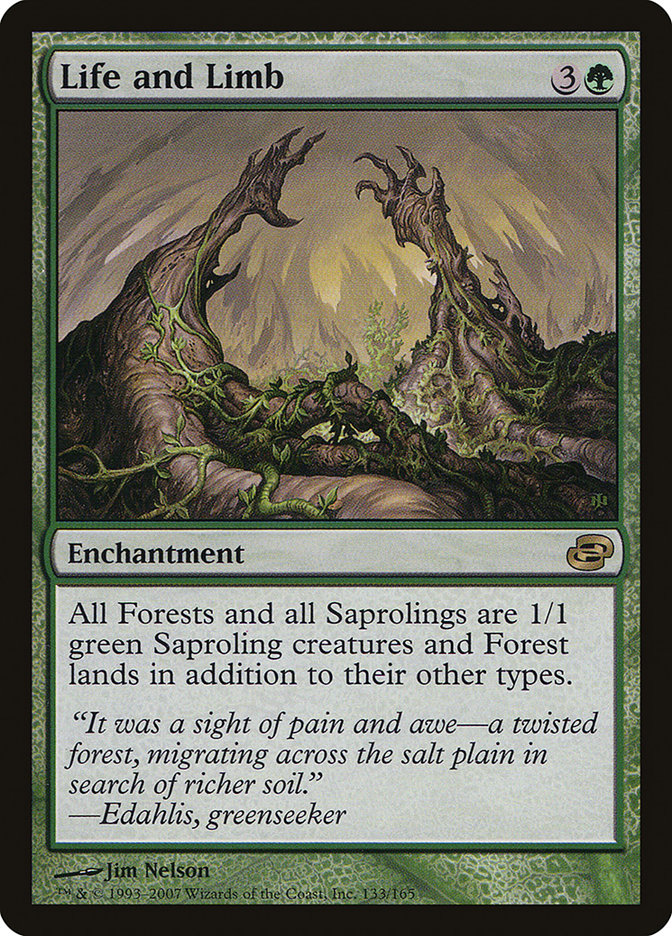
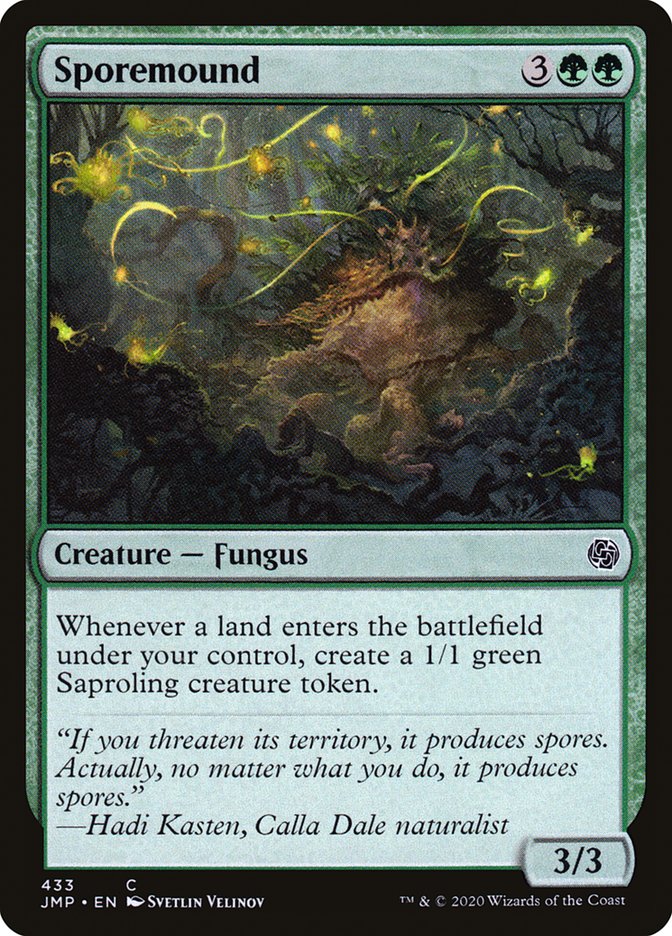

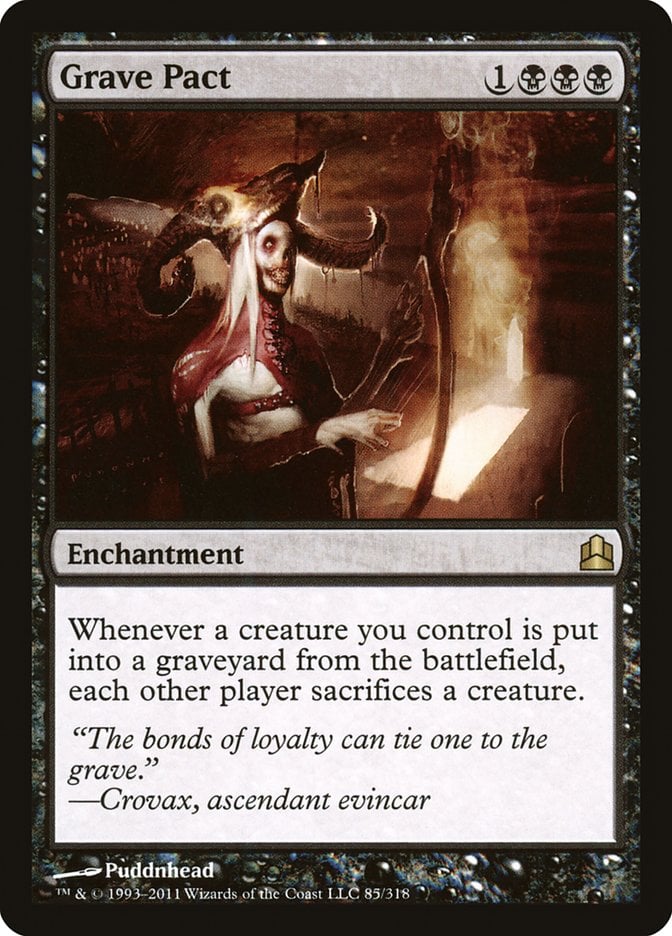
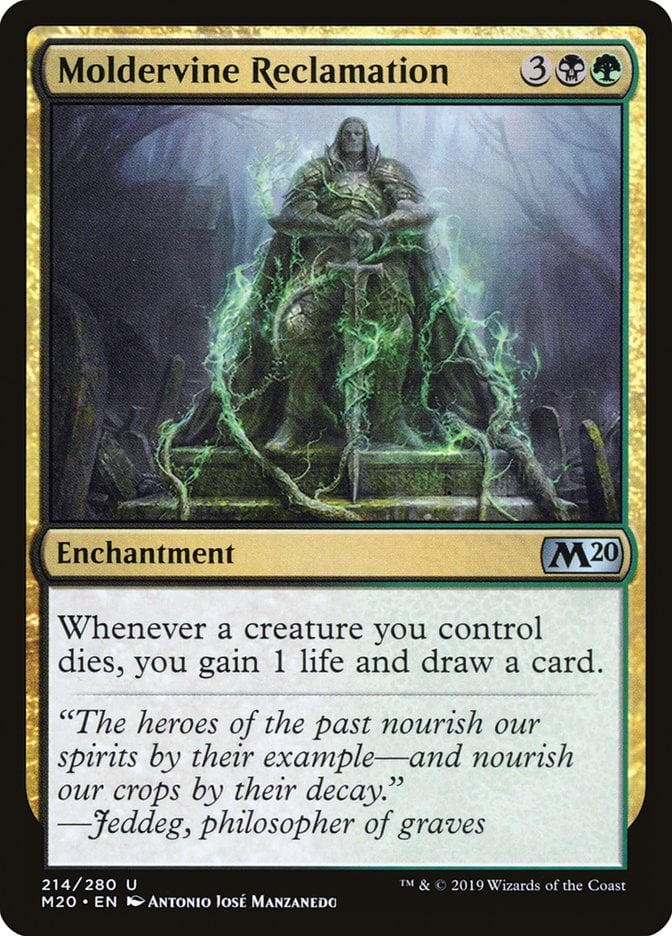
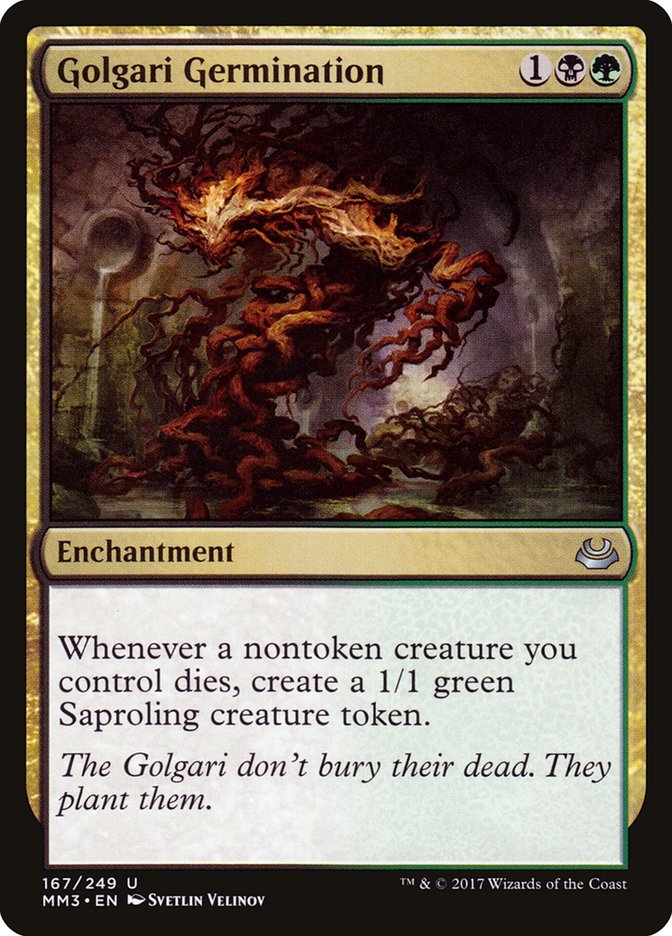
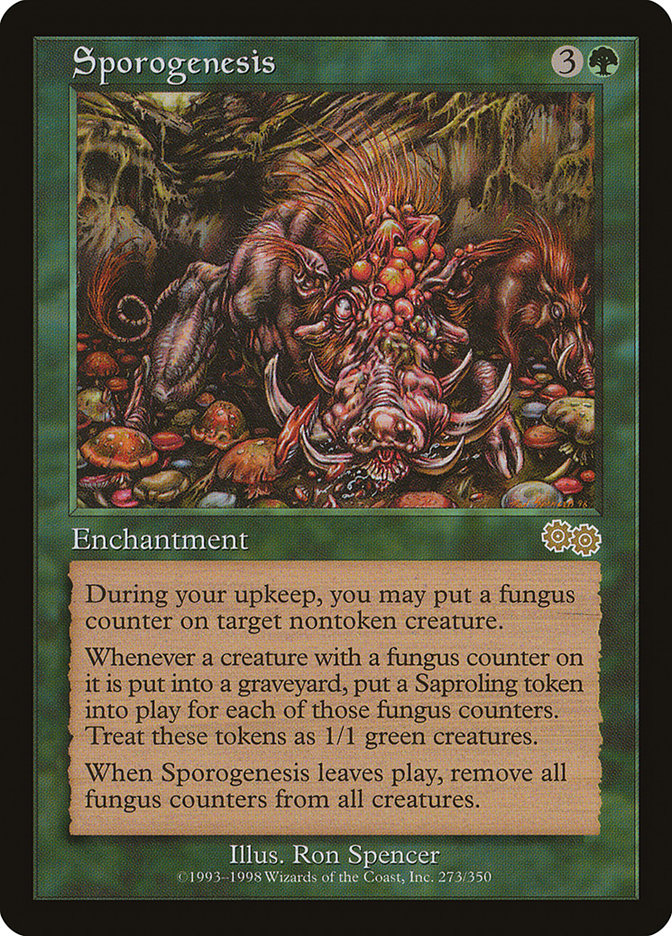
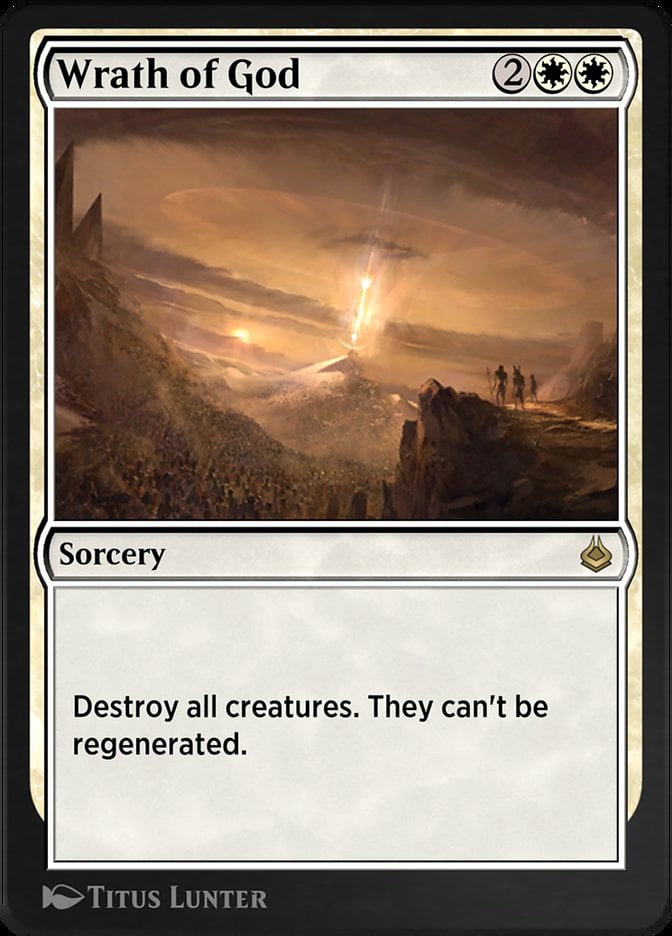

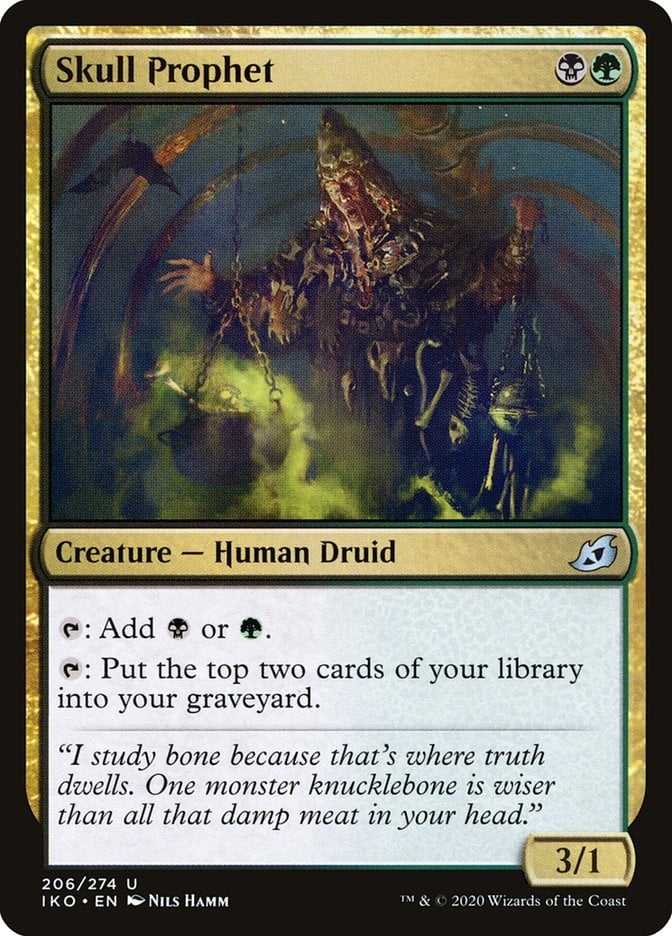

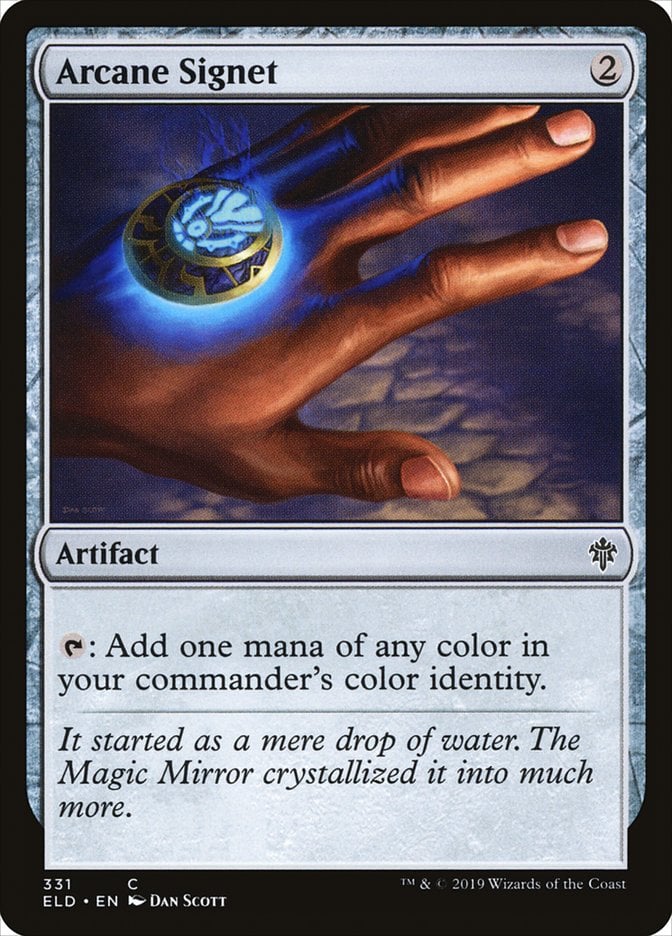
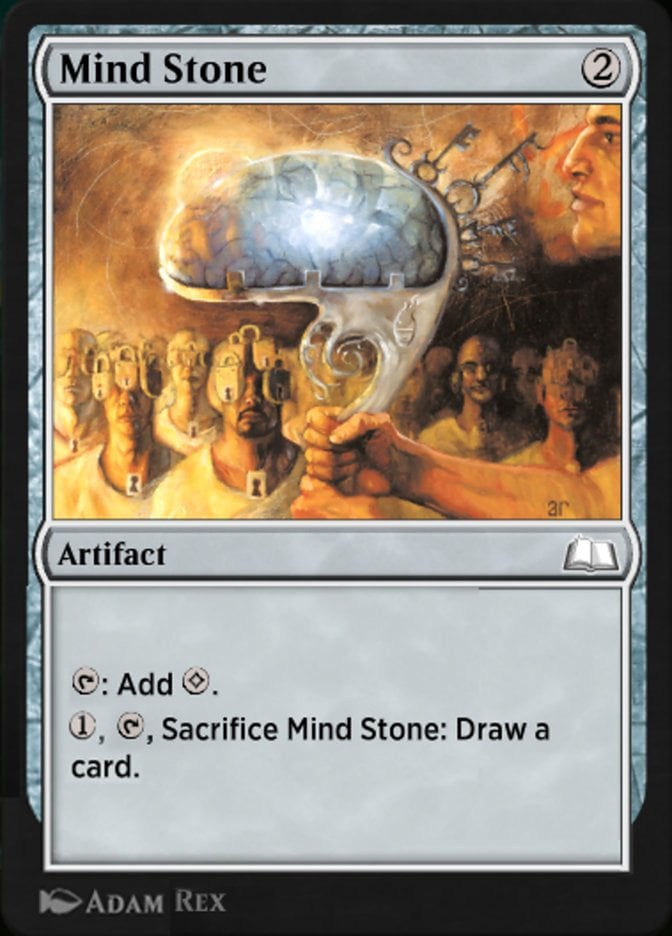


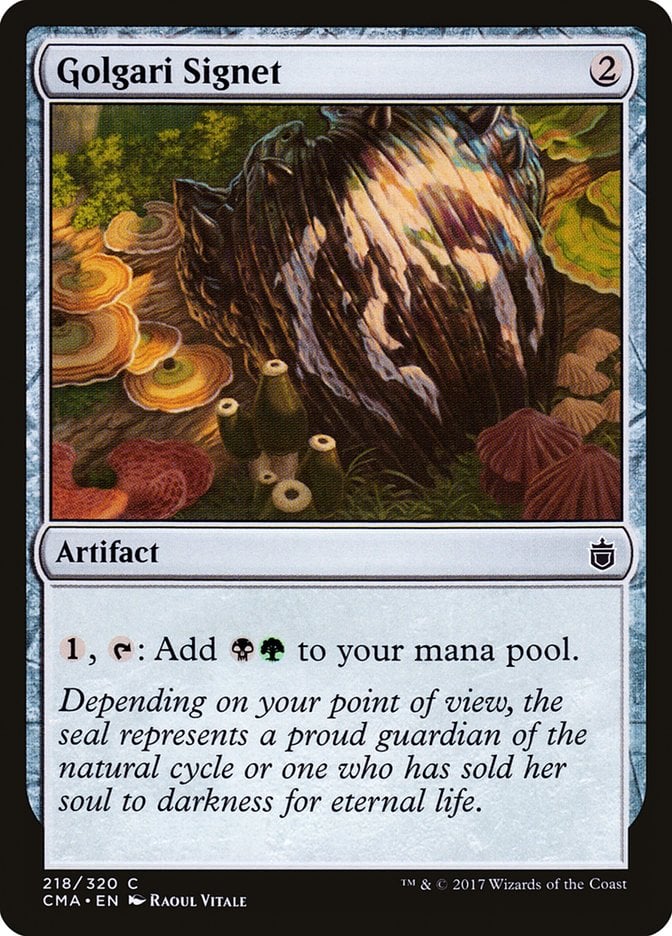

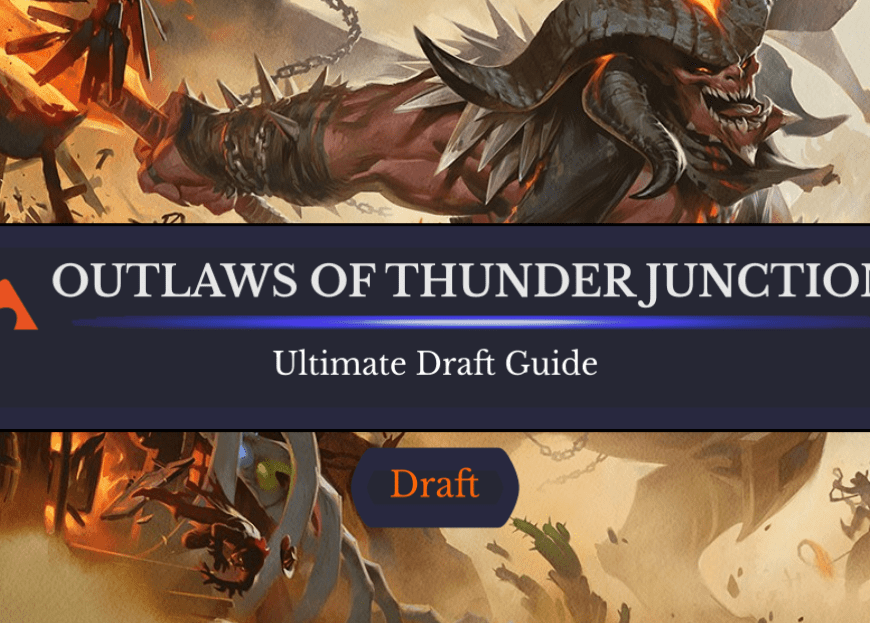
Add Comment